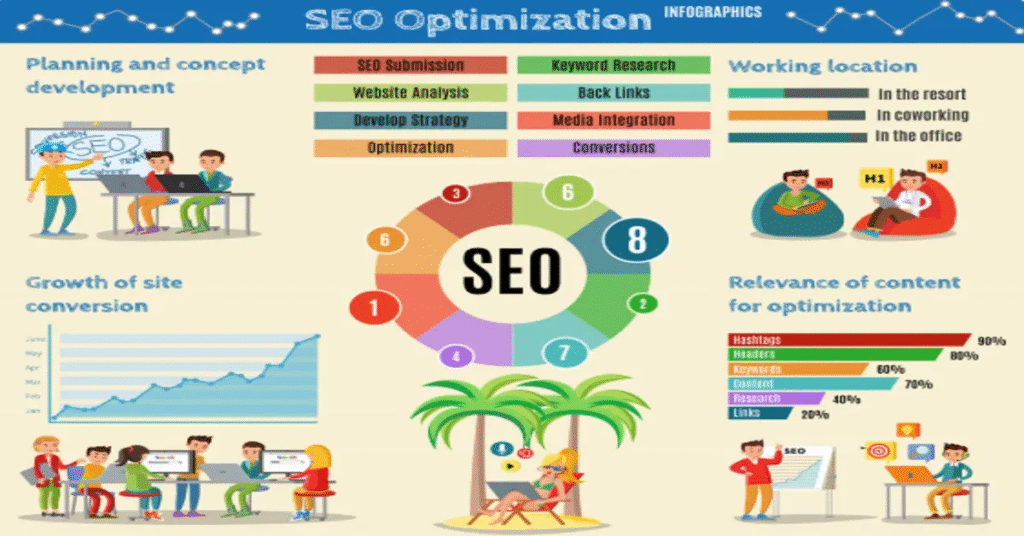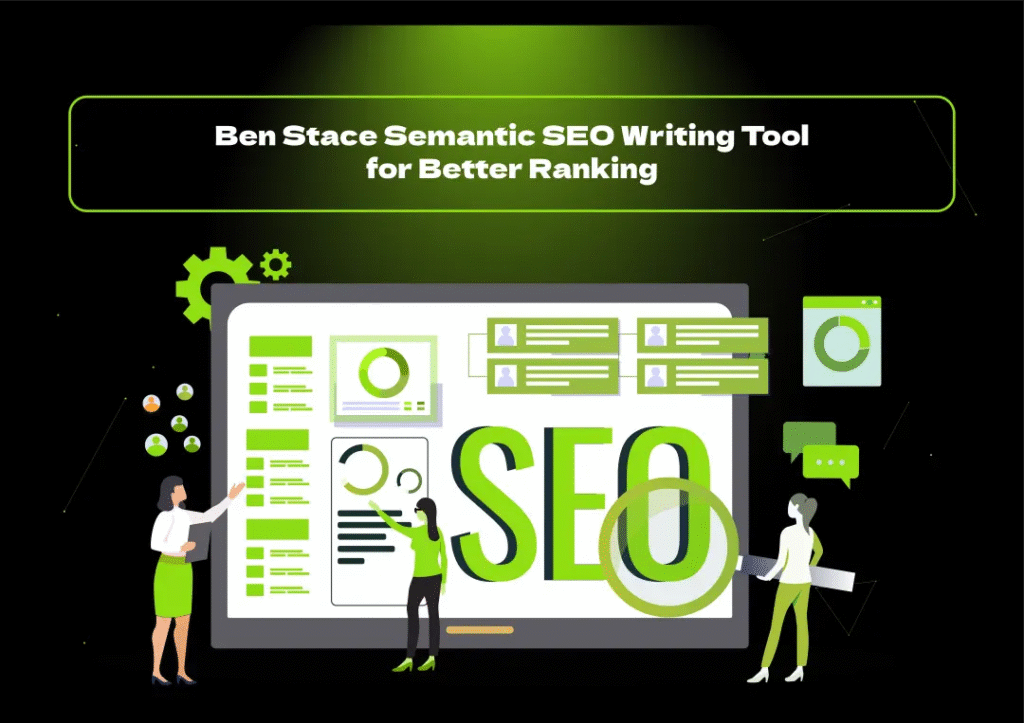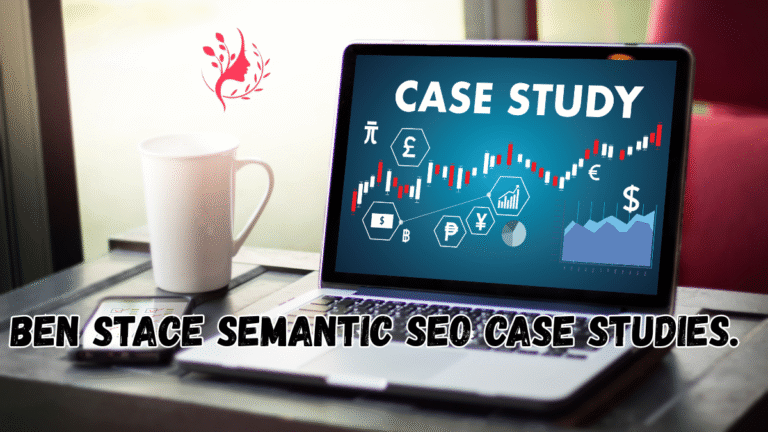In an era where search engines are driven more by context and meaning than exact keywords, semantic SEO has become a cornerstone of modern digital marketing. Among the professionals pioneering this shift, Ben Stace has emerged as a leading voice. His innovative strategies, reflected through a series of well-documented case studies, provide valuable insights for SEOs and businesses aiming to optimize their content for today’s intelligent algorithms.
This article is a comprehensive exploration of the Ben Stace semantic SEO case studies, revealing the methodologies, tools, results, and lessons that set these studies apart. Whether you’re a seasoned SEO strategist or a digital newcomer, this deep dive offers tangible tactics and fresh perspectives.
Who Is Ben Stace?
Ben Stace is a UK-based SEO consultant and content strategist known for his data-driven approach to organic visibility. Over the years, he’s developed a reputation for pushing boundaries, especially through his application of semantic SEO—the practice of optimizing content to align with user intent and contextual meaning rather than just keywords.
His semantic SEO case studies have been cited in industry communities, forums, and publications, making them must-read resources for those serious about long-term organic growth.
What Is Semantic SEO and Why Does It Matter?
Before we dig into the actual case studies, it’s critical to understand what makes semantic SEO different from traditional SEO:
- Contextual Relevance: Google now evaluates not only what a page says but how well it aligns with user intent and related entities.
- Entity-Based Optimization: Instead of optimizing for a single keyword, semantic SEO targets clusters of related ideas and semantic relationships.
- Natural Language Processing (NLP): Search engines use NLP to interpret text as a human would, understanding nuance, context, and related terms.
- Topical Authority: Sites that cover a topic comprehensively are more likely to be ranked higher than sites that merely touch on a subject.
Ben Stace has applied these principles in real-world environments, and his semantic SEO case studies serve as evidence of their effectiveness.
Breakdown of Ben Stace Semantic SEO Case Studies
In this section, we analyze several of the Ben Stace semantic SEO case studies, each illustrating unique strategies and outcomes.

Case Study 1: The Local Services Authority Strategy
Objective:
Improve organic rankings and lead generation for a local plumbing business in the UK.
Approach:
- Entity Enrichment: Ben used NLP tools to identify connected entities such as “emergency plumbing”, “boiler installation”, and “water heater safety”.
- Content Expansion: Instead of optimizing a single services page, he created a network of interlinked articles targeting each service, enriched with FAQs and schema markup.
- Google My Business Optimization: Semantic keyword embedding was used in GMB posts and Q&A sections.
Results:
- 62% increase in organic traffic within 3 months.
- Featured snippets acquired for 4 long-tail local queries.
- 230% increase in phone call leads from organic sources.
Case Study 2: E-Commerce Topical Mapping
Objective:
Boost visibility and conversions for an e-commerce brand specializing in eco-friendly home products.
Approach:
- Topical Mapping: Ben created a semantic content map that linked product pages with informational blog posts based on user search intent.
- Entity-Based Linking: Internal linking was guided by semantic relationships rather than traditional keyword anchors.
- Structured Data Integration: Used Product schema, FAQ schema, and HowTo schema.
Results:
- 112% increase in organic impressions.
- 78% rise in product page sessions.
- A 40% improvement in e-commerce conversion rate within 6 months.
Case Study 3: SaaS Platform Authority Building
Objective:
Establish topical authority in the niche of project management software.
Approach:
- Intent Layering: Ben created a three-layer content model: Awareness (blogs), Consideration (comparisons), and Decision (case studies).
- Answer Engine Optimization (AEO): Focused on optimizing for AI-driven search assistants.
- Use of Advanced NLP Tools: Platforms like Google’s NLP API and IBM Watson were used to measure semantic density and topical relevance.
Results:
- Doubled the referring domains within 4 months.
- Ranked on page 1 for 18 high-volume queries with mixed intent.
- Noticed a 37% increase in direct and branded search traffic.
Unique Methodologies Used in Ben Stace’s Semantic SEO
What sets the Ben Stace semantic SEO case studies apart is not just their impressive results, but the uniqueness of the methods employed. Below are a few proprietary strategies he commonly uses:

Semantic Clustering
Instead of traditional keyword research, Ben employs semantic clustering, grouping topics by context and relationships rather than just similar terms. This builds comprehensive content hubs that signal expertise to search engines.
Triple Entity Embedding (TEE)
A term coined by Ben, Triple Entity Embedding involves ensuring each page addresses:
- A core topic (e.g., “plumbing”)
- A secondary concept (e.g., “water safety”)
- A related service or product (e.g., “emergency repairs”)
This method helps the page rank for a wider array of queries.
User Journey Semantic Segmentation
Content is tailored not just for keywords or intent, but for stages in the user journey, ensuring semantic alignment from awareness to conversion.
Tools and Technology: What Powers These Case Studies?
Ben Stace leverages a suite of advanced tools in his semantic SEO case studies. Here are some notable ones:
- Surfer SEO: For semantic term suggestions and content gap analysis.
- InLinks: Entity recognition and internal linking optimization.
- Frase.io: For building NLP-friendly content outlines.
- Google NLP API: To evaluate entity salience and sentiment.
- MarketMuse: For topical authority measurement.
By combining insights from these tools, Ben fine-tunes both on-page and technical elements for semantic resonance.
Common Patterns Across Ben Stace’s Case Studies
Although each business was different, some consistent patterns emerged across all Ben Stace semantic SEO case studies:
- Content Depth Trumps Frequency: Publishing fewer, more in-depth pages consistently outperformed high-frequency content calendars.
- Structured Data is Non-Negotiable: Implementing schema markup increased CTR and featured snippet acquisition.
- Internal Linking = Semantic Power: Links weren’t just navigational—they were semantically purposeful.
- Search Intent is Layered, Not Linear: Most top-ranking pages answered multiple types of intent in a single article.
Lessons Learned: Key Takeaways from the Case Studies
Based on analysis of multiple Ben Stace semantic SEO case studies, here are actionable lessons:
- Keyword Research Alone Is Outdated
Contextual relevance and entity mapping deliver more long-term SEO value. - Google Understands Meaning, Not Just Words
Use of LSI terms, synonyms, and concept-related phrases signals topical depth. - Topical Authority Outranks Domain Authority in Many Niches
Especially for low-competition or emerging niches. - Semantic SEO Amplifies E-A-T
Expertise, Authoritativeness, and Trustworthiness are more easily conveyed through contextually rich content.
Future-Proofing SEO with Semantic Optimization
The field of semantic SEO is only getting more sophisticated. AI-driven search, multimodal content interpretation, and voice search are making semantic context a necessity rather than a luxury.
Ben Stace semantic SEO case studies offer a preview of where SEO is headed:
- From keywords to topics.
- From webpages to entities.
- From queries to conversation.
Businesses that adopt these strategies today will enjoy compounding benefits over the long term.
Conclusion
The Ben Stace semantic SEO case studies are more than just success stories—they are blueprints for the future of search. By understanding and leveraging how search engines process context and relationships, Ben Stace has consistently helped brands achieve sustainable and meaningful growth in their organic visibility.
Whether you’re optimizing a local service site, a SaaS platform, or a large e-commerce brand, there’s a lesson to be learned from Ben’s innovative and data-backed approaches. As Google and other search engines continue evolving, semantic SEO will no longer be optional—it will be foundational.
For more information visite the website

